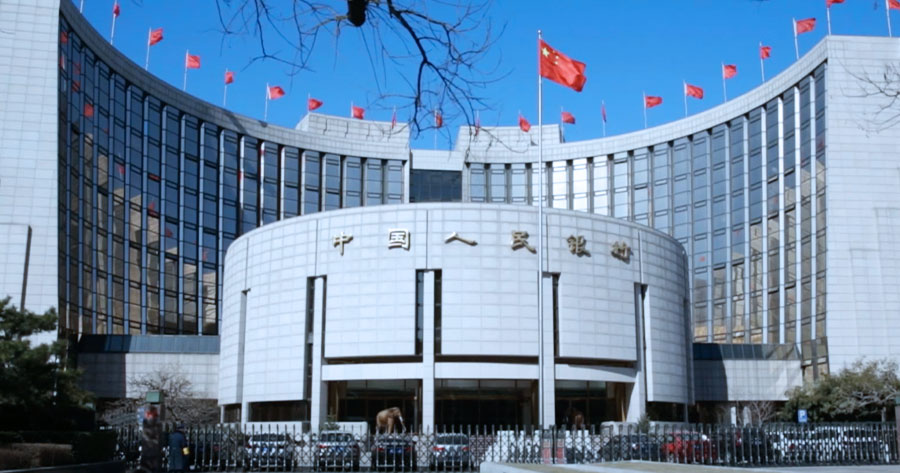In an unexpected move, China’s central bank conducted an unscheduled lending operation on Thursday at significantly lower rates, marking its second surprise action of the week. This initiative suggests a deliberate effort by authorities to provide robust monetary stimulus to support the country’s economy.
The People’s Bank of China (PBOC) issued 200 billion yuan ($27.5 billion) in one-year loans under its medium-term lending facility (MLF) at a reduced rate of 2.30%, down by 20 basis points from the previous MLF loan, according to a statement by the bank.
Additionally, the central bank injected 235.1 billion yuan into markets through seven-day reverse repurchase agreements at 1.70%, with the aim of maintaining adequate liquidity conditions within the banking system by month-end.
The unexpected MLF rate cut was partially in response to sharp declines in the stock market, as noted by Xing Zhaopeng, senior China strategist at ANZ. The move was met with concern in China’s stock markets, reflecting fears that deflationary pressures and weakening consumer demand may be more severe than reflected in current asset prices.
Marco Sun, chief financial market analyst at MUFG Bank (China), highlighted that the rate cuts could reduce financing costs and increase cash flow. The sudden MLF operation was also attributed to the significant volume of MLF loans reaching maturity.
In the midst of speculation surrounding the heavy amount of maturing MLF loans, there are expectations that the PBOC may opt for a permanent cash injection by cutting banks’ reserve requirements (RRR). ANZ’s Xing anticipates a potential RRR cut in the fourth quarter to address the maturing MLF loans.
Notably, major Chinese lenders, such as Industrial and Commercial Bank of China (ICBC), Agricultural Bank of China (AgBank), China Construction Bank, Bank of China, and Bank of Communications, have also reduced deposit rates in response to the PBOC’s actions.
This concerted effort aims to support banks in lowering their medium-term funding costs and securing their net interest margins.
Despite the rate cuts, concerns persist regarding the challenges facing the Chinese economy, especially in sectors like real estate and consumer spending. ANZ’s head of Asia research, Khoon Goh, emphasizes the need for more substantial fiscal support or alternative policy measures to address these underlying issues effectively.





